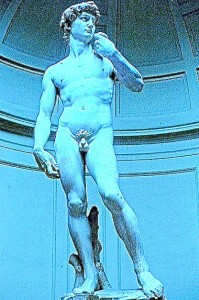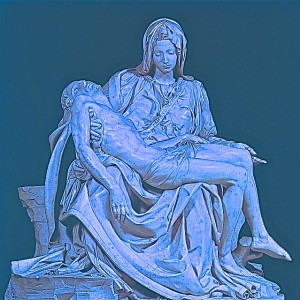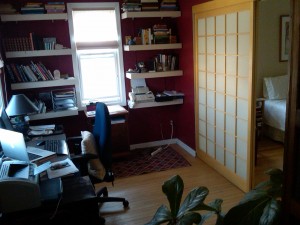Artists, writers, creatives, take heart; even Michelangelo was waylaid from his vocation as a sculptor when practical demands required that he direct his efforts elsewhere for a time. The master of Renaissance art was obliged to set aside his excellent plans to carve Hercules from a block of marble when the governor of Florence requested that he build defense towers instead. Perhaps Michelangelo complained, but he apparently rose to the task on behalf of his beloved Republic. Still, I cannot help but think he yearned to return to his art all the while. This episode of the great artist’s life both fascinates and inspires patience. As I stand before a boulder in the road to writing my third novel, I take particular comfort in Michelangelo’s travail.
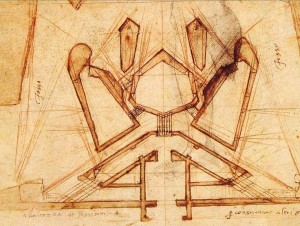
One of Michelangelo’s drawings for the fortifications of Florence, made in 1528-9. Courtesy of the Casa Buonarotti, Florence, Italy. From https://lebbeuswoods.wordpress.com
While Michelangelo is remembered for sublime works such as the Pietà and the David, he is less well known as an architect of fortifications. But in 1529 Michelangelo’s talent for working with stone was put to practical use. At this time, Pope Clement sought to vanquish the independent Republic of Florence and the enemies of the Medicis and to restore the family dynasty to power. Abetting the effort to obstruct the Pope’s plan, Michelangelo was appointed the position of “General Governor and Procurator of the fortifications of Florence.” In this capacity he was charged with designing the towers and walls that would protect the city-state from invasion. Detailed drawings for these plans illustrate the considerable depth to which the artist was occupied with this project. So impressive were his bastions, in fact, that the greatest architect of fortifications of the seventeenth century, Vauban, looked to Michelangelo’s plans for inspiration. (The Art Bulletin 22.3 (1940): 127-37. JSTOR. College Art Association. Web. www.jstor.org.)
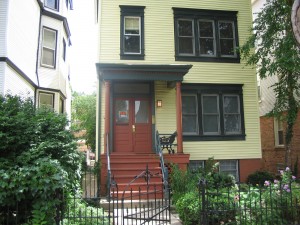 Like Michelangelo, I now find myself in a situation that necessitates a shift from creative pursuit to practical endeavor. Rather than focus on my first draft of The Last of the Magicians, I am now thoroughly occupied with the business of buying and remodeling a new house, and eventually moving. This all came about rather unexpectedly, for I had no intention of selling my present house in Chicago’s Lakeview neighborhood. But as fate would have it, someone, quite literally, appeared at my door and made an offer that a prudent person would not refuse (although I did refuse for a while).
Like Michelangelo, I now find myself in a situation that necessitates a shift from creative pursuit to practical endeavor. Rather than focus on my first draft of The Last of the Magicians, I am now thoroughly occupied with the business of buying and remodeling a new house, and eventually moving. This all came about rather unexpectedly, for I had no intention of selling my present house in Chicago’s Lakeview neighborhood. But as fate would have it, someone, quite literally, appeared at my door and made an offer that a prudent person would not refuse (although I did refuse for a while).
Have I prostituted my writing life for some cash? Perhaps. But more likely, I have bought myself more time to write in the future. Michelangelo returned to sculpting after the war, and I will return to writing in earnest once I am settled into my new place. It is a lesson in learning to go where the current takes you, and perhaps also in accepting a plan for your life that is bigger than your own. Alchemy’s Daughter and Nonna’s Book of Mysteries were both written in between the demands of being a single mom, landlord, and a part-time nurse. One way or other, book number three, The Last of the Magicians, will get written as well. We all get waylaid from our dreams at times. Keep the faith and know the boulders in the road will eventually be moved.

